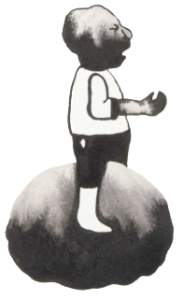 The European Court of Human Rights (ECtHR) rendered its judgment on 7 February 2012 in the Princess Caroline of Monaco II case. Just like the case that led to the first Princess Caroline judgment of 2004, this affair was also about the balance between her privacy and the freedom of the press. In the Caroline II judgment the Caroline I judgment is further elaborated on. The judges came to an unanimous ruling in what will most certainly become a new casebook judgment.
The European Court of Human Rights (ECtHR) rendered its judgment on 7 February 2012 in the Princess Caroline of Monaco II case. Just like the case that led to the first Princess Caroline judgment of 2004, this affair was also about the balance between her privacy and the freedom of the press. In the Caroline II judgment the Caroline I judgment is further elaborated on. The judges came to an unanimous ruling in what will most certainly become a new casebook judgment.
Princess Caroline’s Legal Battle
The battle that Princess Caroline of Monaco fought more than ten years ago against paparazzi who were hounding her, has led to the most important image right case in Europe. Caroline pressed charges against Germany because in her opinion it did too little to protect her privacy. Nondescript photos constantly appeared in German magazines in which she was depicted on private occasions (but in public), with titles such as “Caroline …. a woman returning to life” and “Out and about with Princess Caroline in Paris“. According to the Princess, from the moment she left her house she was “constantly hounded by paparazzi who followed her every daily movement, be it crossing the road, fetching her children from school, doing her shopping, out walking, engaging in sport or going on holiday.” She complained that German law offered too little protection because she could only take action against photos that were taken in secluded spaces, and therefore not against photos that were taken in public places.
In the well-known Caroline judgment (I) of 24 June 2004 the ECtHR made a distinction between reports contributing to a general or political debate that receive a lot of attention from the public, and reports about details of the private life of an individual who does not exercise official functions. Subsequently, this distinction was also used to fight any and all publication of a photo of Dutch celebrities that did not serve the general interest. For instance, news agency Associated Press was reprimanded (MR 3051) for distributing fairly innocent pictures of Maxima and Willem-Alexander and their family, made during a skiing vacation in Argentina. The reason: the publication was not in the public interest.
What seems to be forgotten sometimes is that in the Princes Caroline I judgment the ECtHR took the special situation of the Princess of Monaco into consideration. Caroline was being continually harassed. This climate of “continual harassment” led to a very strong intrusion of her private life and even to a kind of persecution, as the ECtHR considered. As an example a photo is mentioned that was taken at a distance of several hundred meters of Caroline tripping over an obstacle when entering the Monte Carlo Beach Club. Caroline’s attorney referred in his plea to Lady Di who had died six years before. Would Caroline have to suffer the same fate? These circumstances have contributed to the court order against Germany. The question is whether the distinction made by the ECtHR can be applied in every case just like that. This distinction especially seems to relate to cases in which celebrities are constantly hounded by the long-focus lenses of paparazzi, and not to more innocent photos.
Facts in the Caroline II Judgment
Princess Caroline, this time together with her husband Prince Ernst August von Hannover, once again took a case to the ECtHR. In this new case the Monegasque royal family once again litigated against the German government, this time as a result of the publication of photos in the German magazines Frau im Spiegel and Frau Aktuell of a skiing trip (doesn’t that sound familiar!) in St. Moritz. The princely couple successfully contested two holiday pictures before the German court. But the German court rejected the claim against another photo of the couple on a walk. This photo served as an illustration to an article about the ill health of Prince Rainier. The article in Frau Aktuell read “That is genuine love. Princess Stéphanie. She is the only one who looks after the sick prince“, and mentioned, inter alia: “… where her father is concerned Princess Stéphanie knows where her heart lies. While the rest of the family are travelling around the world, she has run to be at the side of Prince Rainier (78), who appears to be seriously ailing. She is the only one who takes care of the sick monarch. Stéphanie’s sister, Caroline (45), has taken a few days’ holiday with her husband Ernst August (48) and their daughter Alexandra (2) at the fashionable St. Moritz ski resort in Switzerland.”
The German court ruled that the ill health of the reigning prince is a subject of general interest. The press could report on the manner in which his children combined their family obligations with their private wishes, such as the wish to go on holiday. This case even ended up in the German Constitutional Court, which in its judgment (English translation) made, inter alia, the following rulings, which quite put the Princess Caroline I judgment into perspective:
‘Even entertaining contributions concerning prominent persons, for instance, are covered by the protection of freedom of the press. […] Prominent persons can also offer orientation in shaping one’s own lifestyle, as well as fulfilling the function of role model or showing what one does not wish to imitate […] The circle of legitimate general public interest would be prescribed too narrowly if one were to restrict this to behaviour that is scandalous, or morally or legally questionable.
Even the normality of everyday life, as well as conduct of celebrities that is in no way objectionable, may be brought to the attention of the public if this serves to form public opinion on questions of general interest […] To deny an article its role as contributor to the formation of public opinion merely because of its entertaining presentation, might also violate the content of the fundamental-rights guarantee of Article 10 of the Convention. […] Even “mere entertainment” cannot per se be denied all relevance in the formation of opinions. […] In recent times the significance of visual portrayals for press reporting has in fact increased.‘
Weighing of Interests by ECtHR: Privacy vs. Freedom of Speech
The ECtHR has first emphasized that the right to respect private life (Article 8 of the ECHR) and the freedom of expression (Article 10 of the ECHR) merit equal protection. Which right prevails depends on the circumstances. The following criteria are relevant for the weighing of interests in the present case (NB: and therefore not necessarily in cases in which other circumstances apply):
a) An essential criterion is the question (see the Princess Caroline I judgment) of whether an expression (photo or article) contributes to a debate of general interest.
The question to be answered in this judgment was when something qualifies as a subject that is of general interest (“debate of general interest“). According to the ECtHR, this depends on the circumstances of the case. Because this is not very clarifying, the ECtHR gave examples. The ECtHR has emphasized that the general interest is not only in reports about politics or crime, but also, for instance, in reports about sports or performing artists.
b) How well-known is the person and what is the subject of the article?
A distinction must be made between private persons and persons who are acting in a public context. Public figures must tolerate more. The ECtHR also refers to the fundamental distinction made in the Caroline I judgment between factual reporting that can contribute to a debate in a democratic society, for instance about politicians exercising their official functions, and reporting about details of the private life of an individual who does not exercise any official functions.
c) How the person in question behaved in the past
This is an interesting aspect in this judgment. It is important how the person in question has behaved prior to the publication, especially whether he himself actively sought publicity. Although this collaboration with the press does not mean that the person cannot act against publications anymore, it is indeed a relevant circumstance. Also relevant is the question whether the photo and the information had been published before.
d) The contents, form and consequences of the publication
It is, for instance, important how the person is depicted in the photo, and how the publication has been distributed (locally, nationally).
e) The circumstances under which the photos were taken
Did the person portrayed give permission for the photo and the publication? Was the photo taken surreptitiously? Furthermore, the seriousness of the violation of privacy and the consequences thereof are relevant.
Subsequently, the ECtHR has applied these criteria to the case and ruled that the German Court of Appeal could rightfully conclude that the illness of Prince Rainier is “an event of contemporary society”. Therefore, according to the ECtHR, the publication of photos of the skiing trip of Princess Caroline and Prince Ernst, which illustrated them enjoying their holidays while Princess Stéphanie stayed home in Monaco to care for the sick Prince Rainier, had been rightfully allowed by the German court. The photos contribute, at least to a certain extent, to a debate of general interest. In this respect the ECtHR also considered that according to the German court, two other photos of the skiing trip, which were only published for entertainment purposes, were not acceptable.
Can Media Now Make Up Relevant Circumstances?
The complaint of the Von Hannovers that media may abuse these criteria by simply inventing an event of contemporary society to illustrate private photos, was not well received by the ECtHR. We only adjudicate the publication in question, not future expressions, argued the ECtHR.
Official Function or Not Is Not Decisive
Also the reliance of the Prince and Princess on the distinction made in the Caroline I judgment between persons who exercise official functions and those who do not (they put themselves in the second category), does not save them. Even if they do not exercise any official functions, it is beyond dispute that Caroline and Ernst August are very well-known figures who therefore must put up with more media attention.
Summary
This judgment illustrates that the criteria from the Caroline I and II judgments are relevant circumstances, but that not meeting one or more of the criteria does not automatically make a publication unlawful. A fairly broad interpretation has been given of what contributes to a debate of general interest, while it has been emphasized that whether official functions are exercised or not need not be decisive for the question of whether a publication is acceptable. The ECtHR has also emphasized that it is important whether the person portrayed has actively sought to attract media attention in the past. All in all, in this Princess Caroline II judgment the ECtHR has given the fairly repressive Caroline I judgment a turn in the direction of the freedom of expression, so that the entertainment press has gained more room. And despite the distinction made in the Caroline I judgment between persons who exercise or do not exercise official functions, it is important that although the Von Hannovers do not exercise any official functions in the photo concerned, they are without a doubt very well-known figures who have to put up with more media attention. The question as to whether a Dutch celebrity is or is not exercising an official function in the photo is not decisive for the question as to whether the publication of the photo is lawful.

